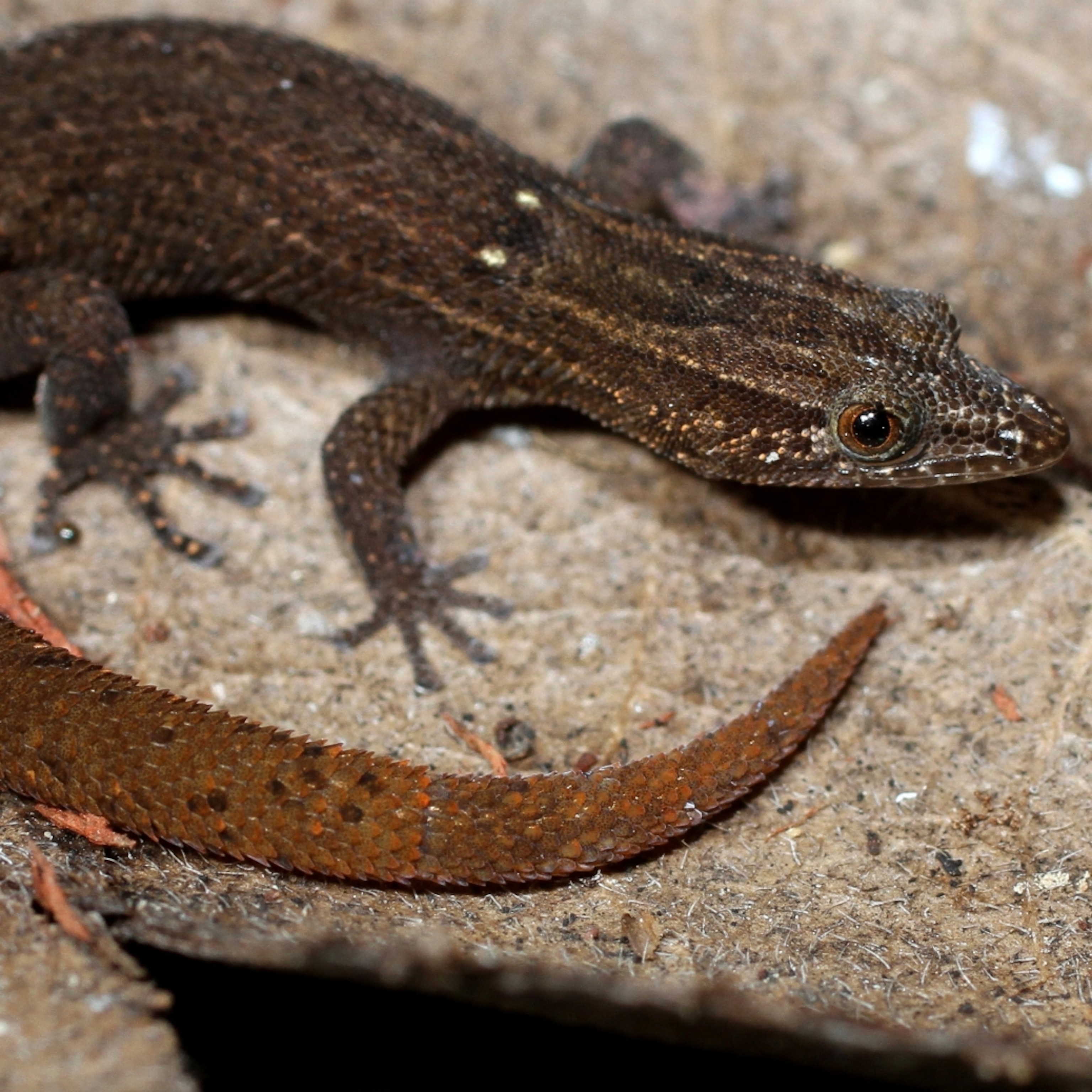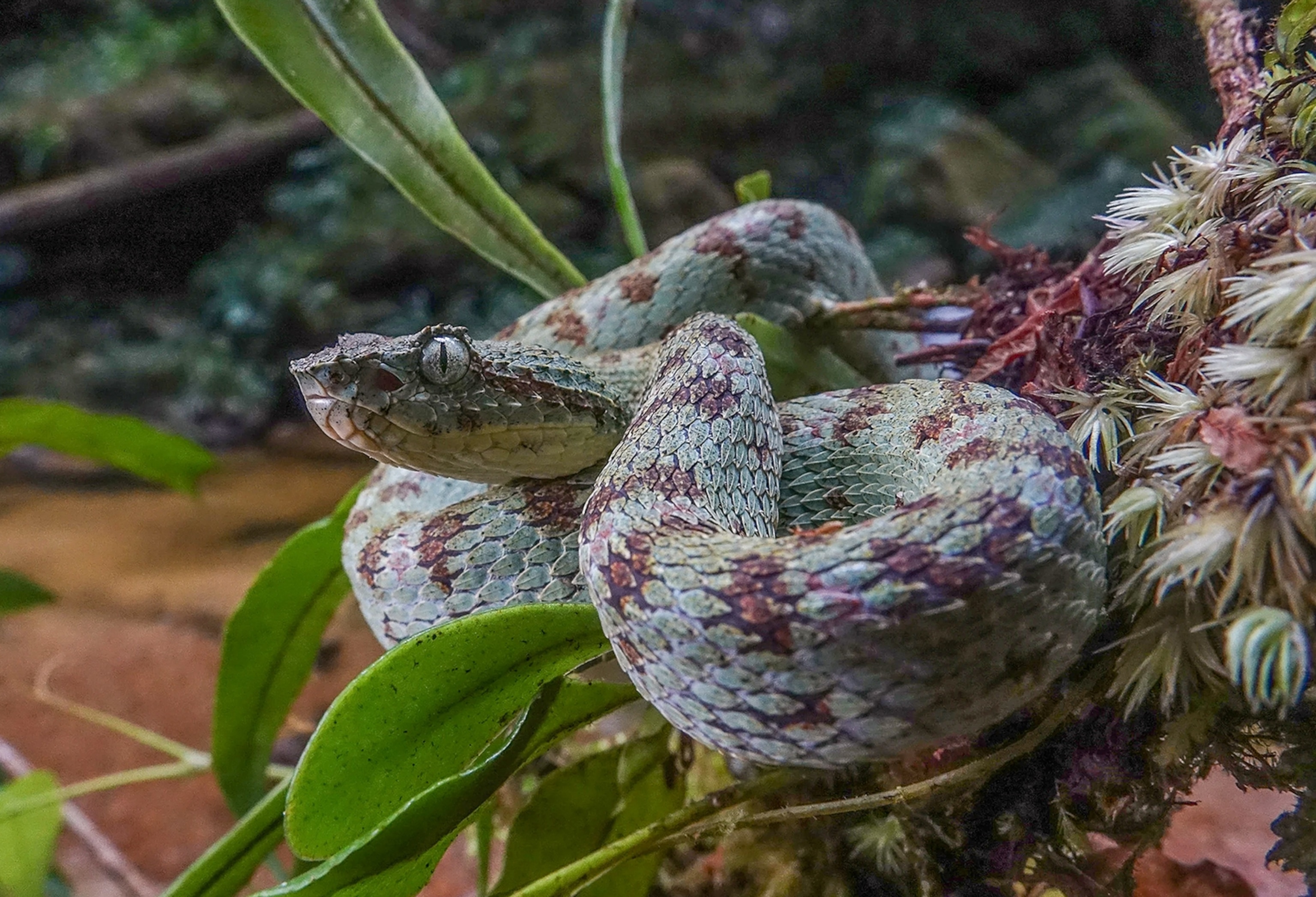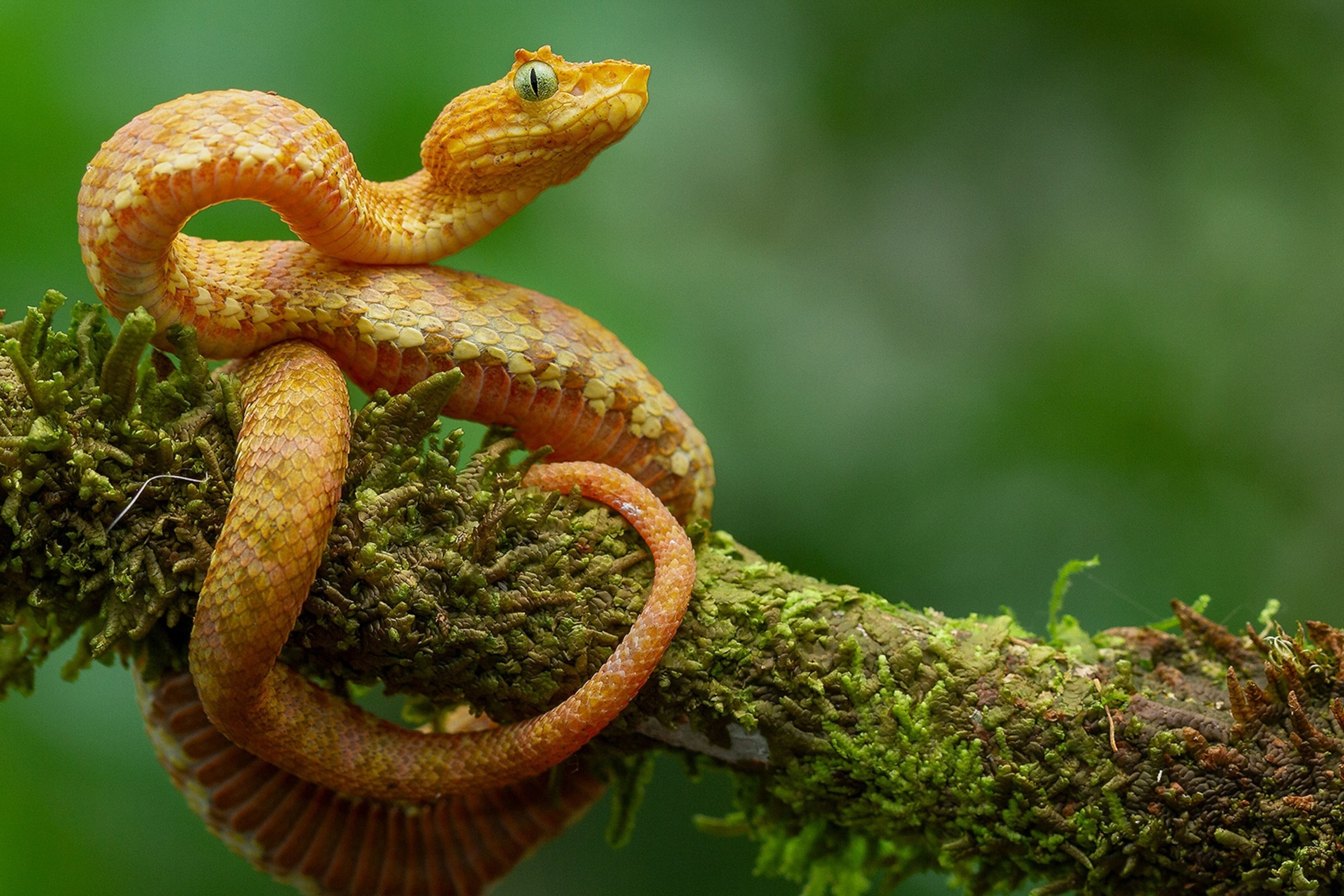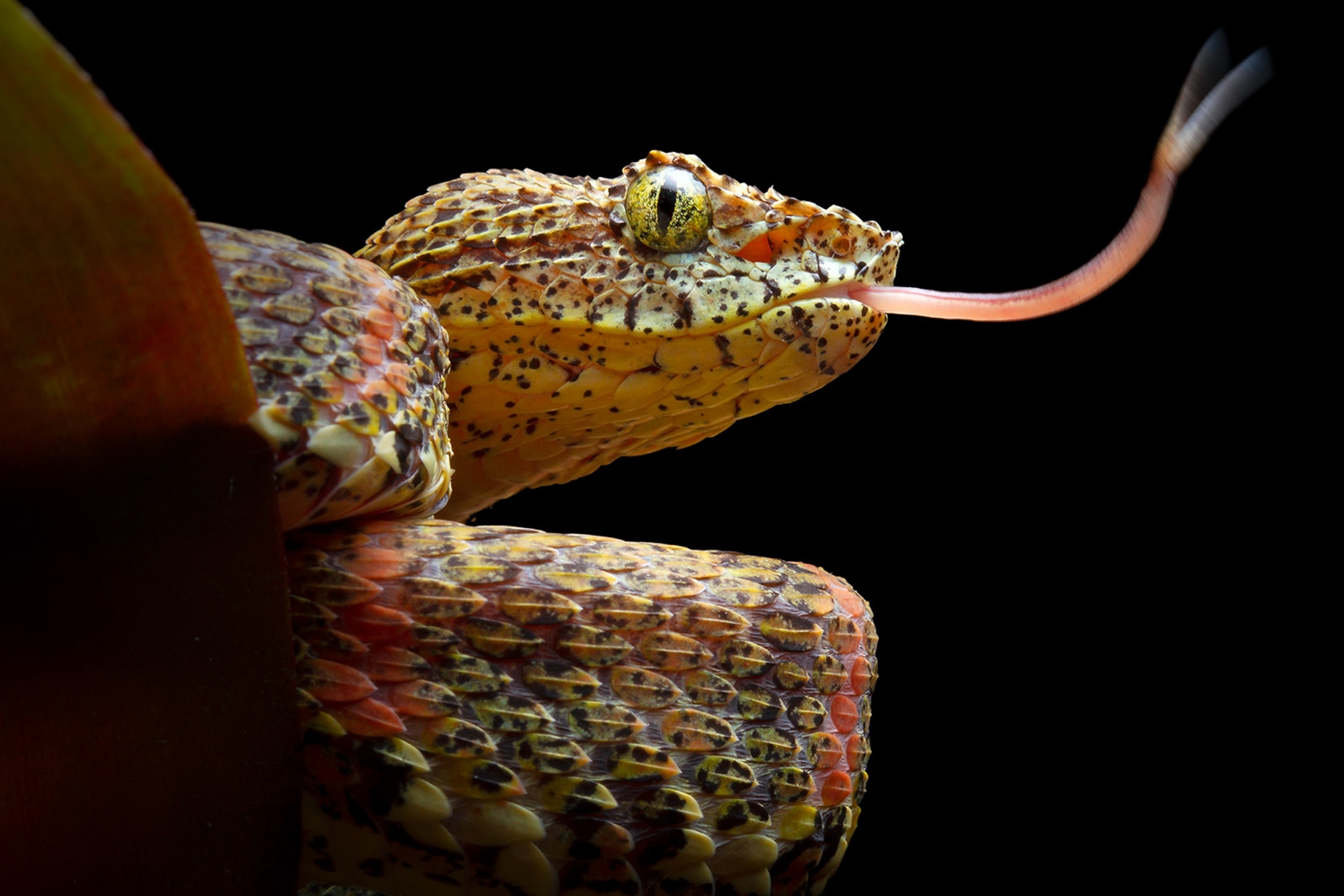Surprise: 5 new species of the mesmerizing eyelash viper discovered
Known for eyelash-like scales above their eyes, these brilliantly colored snakes are more diverse than scientists ever imagined.
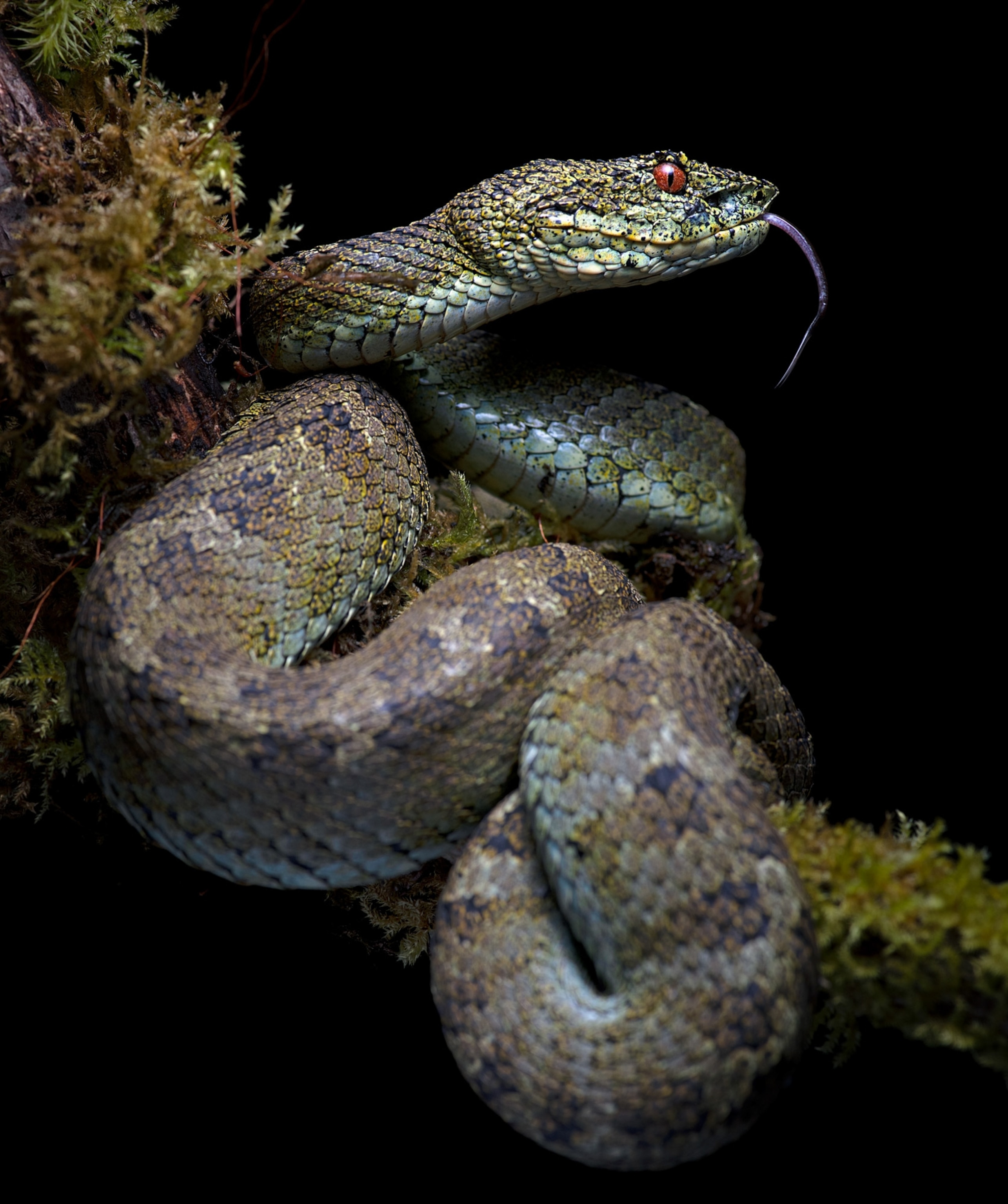
In 2013, biologist Alejandro Arteaga had just co-authored a book about the amphibians and reptiles of Mindo, Ecuador, complete with a beautiful, lime-colored eyelash viper on the cover.
The only problem? When he showed the book to scientist friends in Costa Rica and Panama, they did a double-take.
“All of them said, ‘There’s no way this species is an eyelash viper. It looks so different from what we have here,’” Arteaga remembers.
It wasn’t just because the snake was neon green. Eyelash vipers are famously polychromatic, which means their appearances can vary widely, even among snakes born in the same litter. In fact, they come in a rainbow of naturally occurring color morphs, including ghost, red wine, coffee, turquoise, and even a so-called “Christmas morph” made up of green, red, and white.
(How did this rare pink manta get its color?)
But the more Arteaga and his colleagues looked at the snake on his book cover—a “cloud forest morph”—the more they found dissimilarities. Heck, this specimen didn’t even have the pointy scales above the eyes that give eyelash vipers their common name.
Fast forward more than a decade, and Arteaga and his colleagues have solved the mystery. According to a study published in the journal Evolutionary Systematics, the animal known as the eyelash viper, or Bothriechis schlegelii, isn’t just one species, but many.
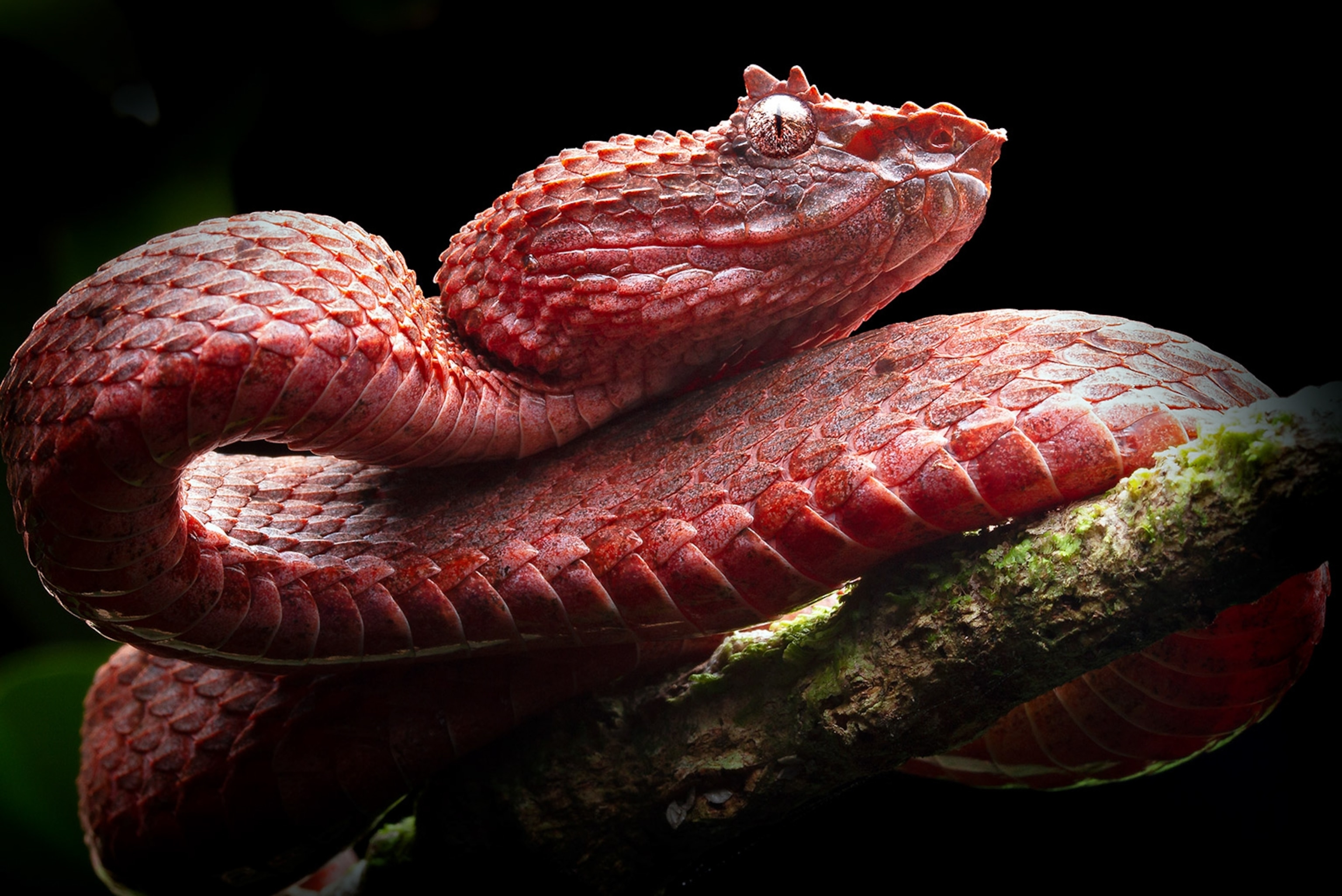

By closely examining 400 museum specimens, as well as 80 snakes captured in the wild, from Mexico to Ecuador, the scientists were able to use a combination of physical characteristics as well as genetics to describe five new species: Klebba’s eyelash pit viper (B. klebbai), Shah’s eyelash pit viper (B. rasikusumorum), Khwarg’s eyelash pit viper (B. khwargi), Rahim’s eyelash pit viper (B. rahimi), and Hussain’s eyelash pit viper (B. hussaini).
“I would say that this is just the beginning,” says Arteaga, director of an Ecuadorian conservation nonprofit known as the Khamai Foundation and lead author of the study.
He means that literally, by the way. Even as you read this, Arteaga’s group is gathering evidence that there’s at least one more eyelash viper species to add to the ranks.
This discovery is important for more than a few reasons—not just to better protect the snakes but for our own health too.
Why this discovery matters
New species are always a big deal, and doubly so when the animals in question come in more colors than a bag of Skittles. But the discovery of five genetically distinct populations of eyelash vipers could help scientists better understand the threats against them.
“These eyelash pit vipers have been very prized in the international illegal trade of exotic animals,” says Arteaga.
(The exotic pet trade, explained.)
If there was only one species of eyelash viper in Central and South America, then it might be able to weather that threat. But given the new evidence that these are actually several discrete populations of snakes, the chances than any one of them could get wiped out rises.
5 new species of eyelash viper
“To make matters worse, many of them are much more restricted than we thought. Within 10,000 square kilometers or less, in areas that have been almost completely devastated in terms of deforestation,” he says. “So, that combined with poaching is a bad combination.”
In fact, Arteaga believes that four of the new species will qualify for either vulnerable or endangered status with the International Union for Conservation of Nature, which tracks and estimates extinction risk.
The discovery could also have implications for treating snake bites. Eyelash vipers are venomous, so we may find that the snakes’ venom varies among these five species just as much as their genetics. And this could mean that antivenom created from one species is less effective for treating bites by another.
(How harnessing the powers of venom could lead to new medicines.)
Likewise, there could be important biomedical potential hiding inside each new species. For instance, pit viper venom has already led to the development of a blood pressure medication. Gila monster venom has led to diabetes medication. And painkillers have been inspired by the sting of cone snails.
“I would say it’s a phenomenal opportunity to start looking into those compositions to see if we can come up with a new sort of painkiller, for example,” says Arteaga.
‘A major and impressive step’
As an expert in snake genomics at the University of Texas Arlington, Todd Castoe, who wasn’t involved in this study, says he isn’t entirely surprised to learn that there’s a substantial amount of undescribed diversity in eyelash vipers.
“[B]ut without this comprehensive sampling and analysis, this group had remained a mystery for good reason,” writes Castoe in an email.
While Castoe says the study would have been stronger if it could have used nuclear DNA rather than mitochondrial DNA, given the restrictions on collecting and exporting tissues and the expense of such approaches, “the work represents a major and impressive step towards untangling the true diversity that exists within these fascinating snakes.”
Castoe hopes that the study leads to a reevaluation and reprioritization of conservation measures to ensure each new species is protected.
Furthermore, the research is a clear sign that we have much more to learn about these snakes. For starters, while scientists suspect the vast array of color morphs allow the serpents to better blend in with the multicolored environments they inhabit, no one can say for sure. Similarly, why some species have those namesake eyelashes remains a mystery.
“I think this study stands out as a key example illustrating how much of the planet’s biodiversity still remains to be discovered,” says Castoe.



